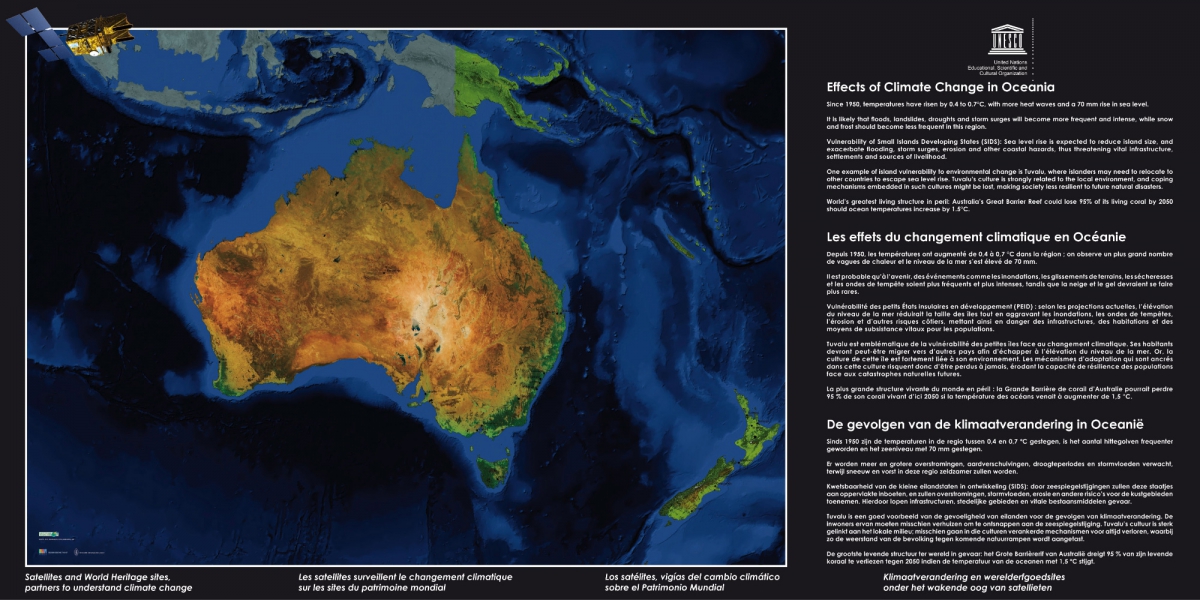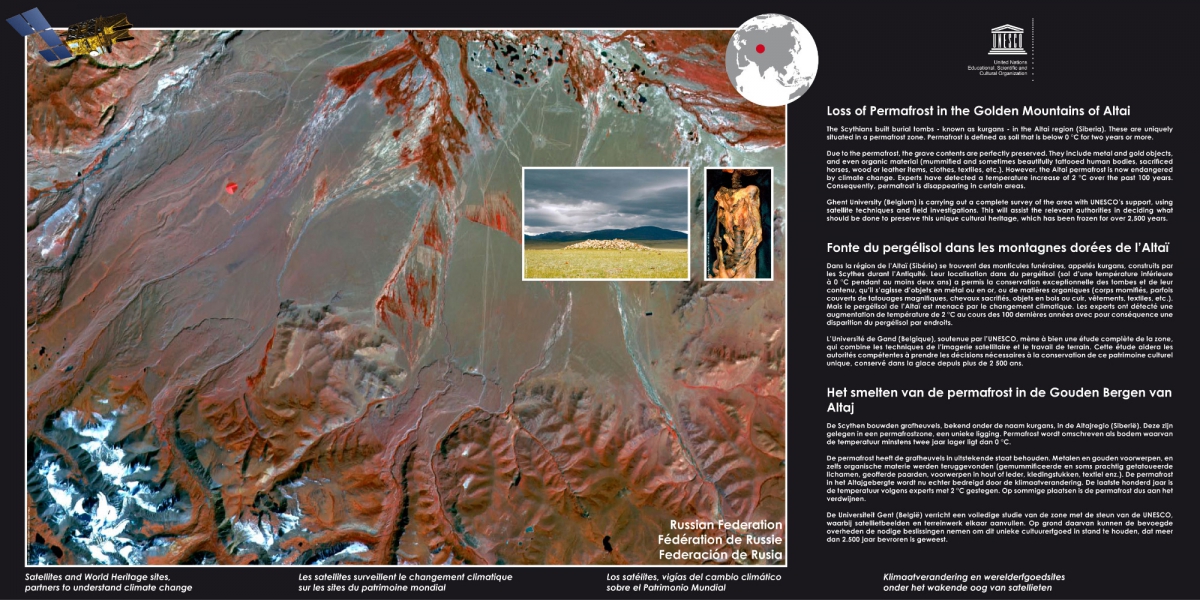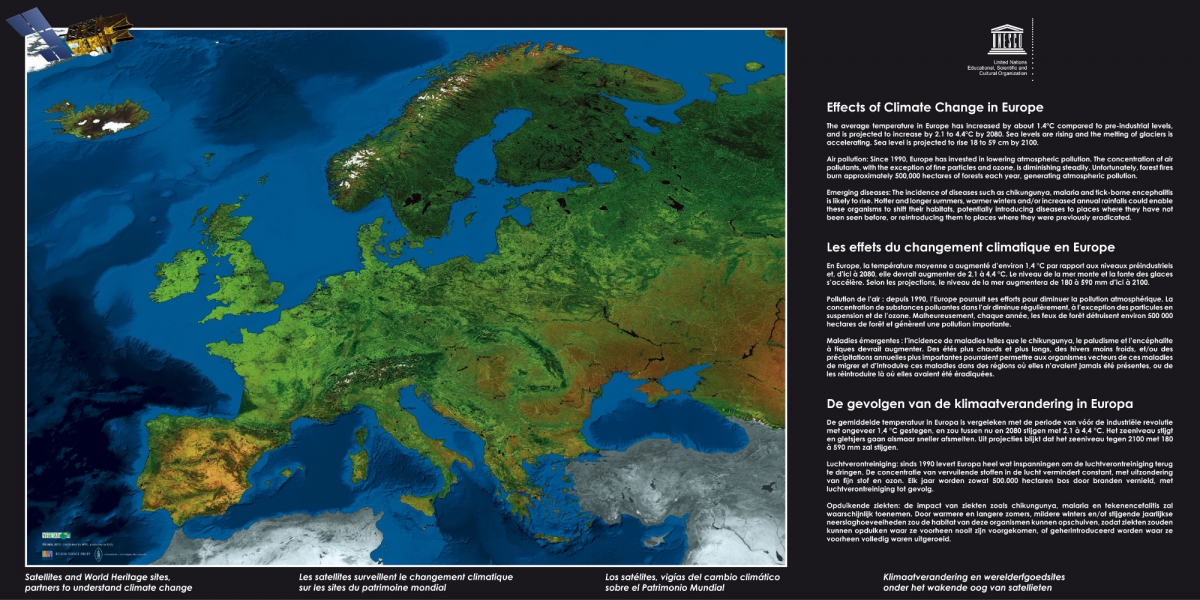The exhibition shows a wide variety of climate change effects on World Heritage sites and explains the inputs provided by space technologies to understand the causes and effects of climate change on these sites.
Download the brochure Information file
Climate change, World Heritage sites and Satellites
The Intergovernmental Panel on Climate Change (IPCC) states that ‘global warming is unequivocal’ and is due largely to an increase in atmospheric concentration of greenhouse gases, such as carbon dioxide (CO2), caused by the burning of fossil fuels. Since 1993, the global mean sea level has risen at a rate of about 3.2 mm per year. Thermal expansion of the oceans and widespread melting of land ice will result in further global sea level rise.
Reduced rainfall, higher sea and land surface temperatures, more severe storm events, ocean acidification and rising sea levels are all expected to have a significant impact on World Heritage sites.
The conservation of natural and cultural heritage may be jeopardized by climate change. Glaciers are melting, coral reefs are exposed to bleaching, and terrestrial biodiversity is being affected. Increasing sea levels threaten many cultural sites located near the coast, and other aspects of climate change are affecting ancient archaeological sites.
Through a series of remarkable examples, this exhibition demonstrates the use of satellite Earth observation to assess the effects of climate change on selected World Heritage sites. Space-based sensors have the capacity to measure essential climate change variables.Overall comprehensive monitoring using space technologies is made possible through collaboration among nations around the globe. 2011 marked the 10th anniversary of the European Space Agency – UNESCO ‘Open Initiative on the use of space technologies to support World Heritage: From Space to Place’. Today, 60 space partners are assisting UNESCO in bringing the benefits of space science and technology to developing countries.
This exhibition has been originally developed in 2010 by UNESCO for the UN Climate change conference in Cancun, Mexico (COP16), with the financial aid of the Flemish Government and thanks to generous contributions from a number of space partners: the Belgian Science Policy Office, Planet Action (France), the European Space Agency (ESA) and the German Aerospace Center (DLR).
The information used for this exhibition was taken from:
- ‘Case Studies on Climate Change and World Heritage’ (UNESCO, 2007)
- 'IPCC Fourth Assessment Report ‘Climate Change 2007: Impacts, Adaptation and Vulnerability’ (Intergovernmental Panel on Climate Change, 2007)
- ‘Ten Years of Imaging the Earth’ (Belgian Federal Science Policy Office, 2009).
- ‘ESA - UNESCO Open Initiative: From Space to Place’ joint projects between UNESCO and space partners.























